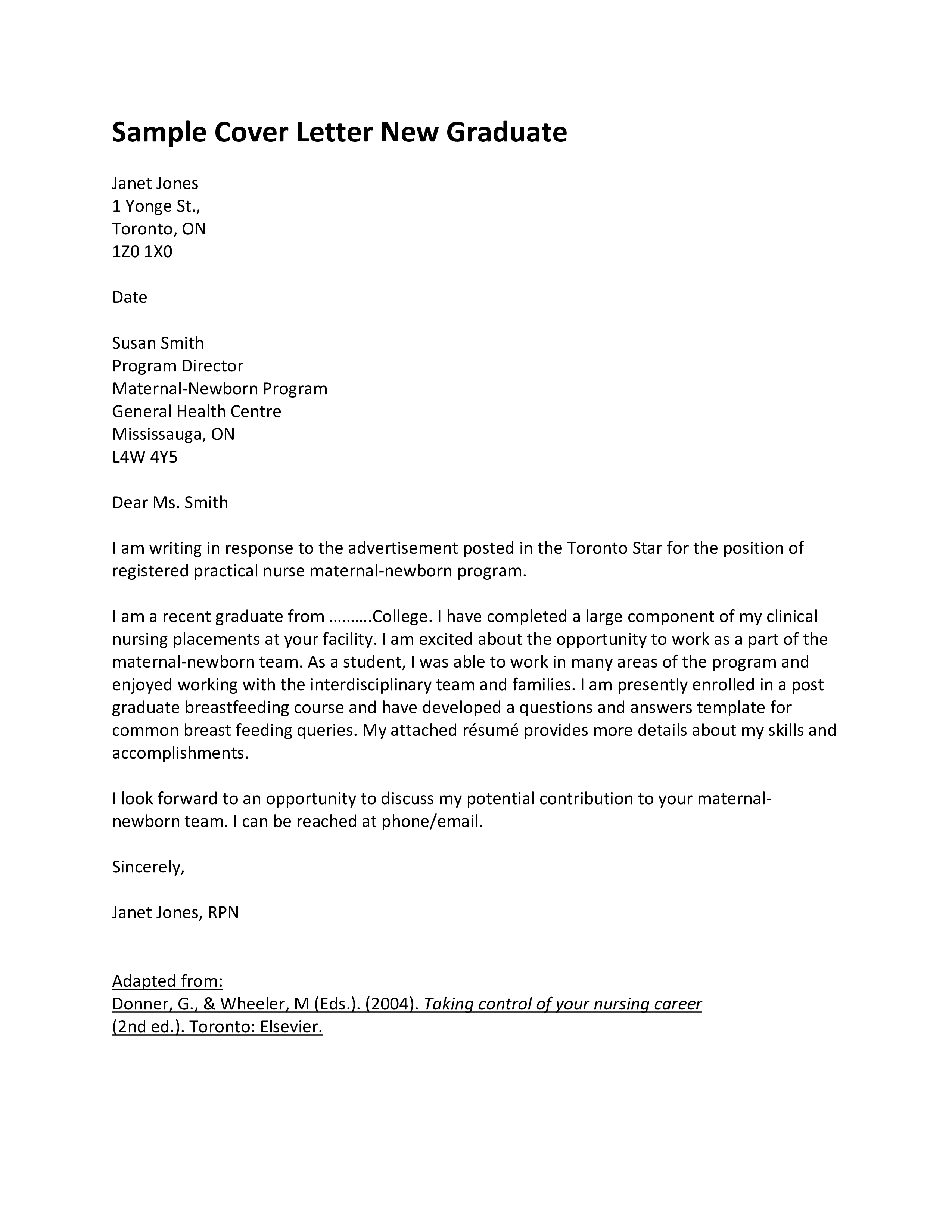Understanding the Graduate Cover Letter
A graduate cover letter is a crucial document that accompanies your resume when applying for jobs or internships after completing your graduate studies. It serves as your introduction to the hiring manager and provides an opportunity to showcase your qualifications, skills, and experiences in a more personalized and detailed manner than your resume allows. Crafting a compelling cover letter is essential for making a positive first impression and increasing your chances of getting an interview. A well-written cover letter can set you apart from other candidates and highlight why you are the perfect fit for the position.
Purpose of a Graduate Cover Letter
The primary purpose of a graduate cover letter is to articulate your interest in a specific job or opportunity, demonstrating how your skills and experiences align with the employer’s needs. It allows you to explain any gaps in your resume, elaborate on key achievements, and highlight your personality and enthusiasm. Furthermore, it provides a platform to showcase your research abilities, communication skills, and any specialized knowledge gained during your graduate studies. It helps the hiring manager understand your unique value proposition and why you should be selected for an interview.
Key Differences from Undergraduate Letters
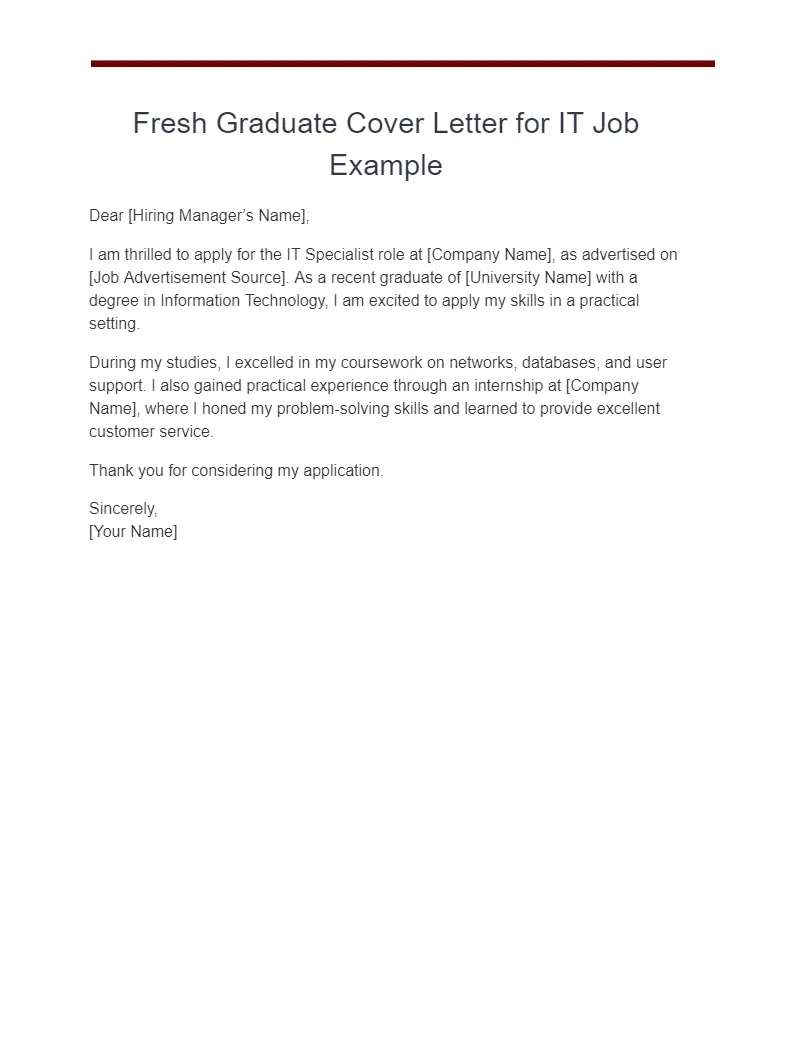
Graduate cover letters often differ significantly from undergraduate cover letters. Graduate letters place a stronger emphasis on research experience, specialized skills, and academic achievements. They also tend to be more focused on career goals and how the position aligns with your long-term aspirations. While undergraduate letters may focus on general skills and entry-level experiences, graduate letters highlight advanced knowledge, specific projects, and the ability to contribute to a research-oriented environment. It is critical that the graduate letter shows how your graduate education has prepared you for the role, what you have learned, and how you can apply that knowledge to the position.
Essential Components of a Graduate Cover Letter
Contact Information and Date
Begin your cover letter with your contact information, including your full name, phone number, email address, and LinkedIn profile (if applicable). Below your contact information, include the date. This information should be left-aligned and at the top of the document. Make sure your email address is professional. Choose a font that is easy to read such as Arial, Calibri, or Times New Roman.
The Salutation
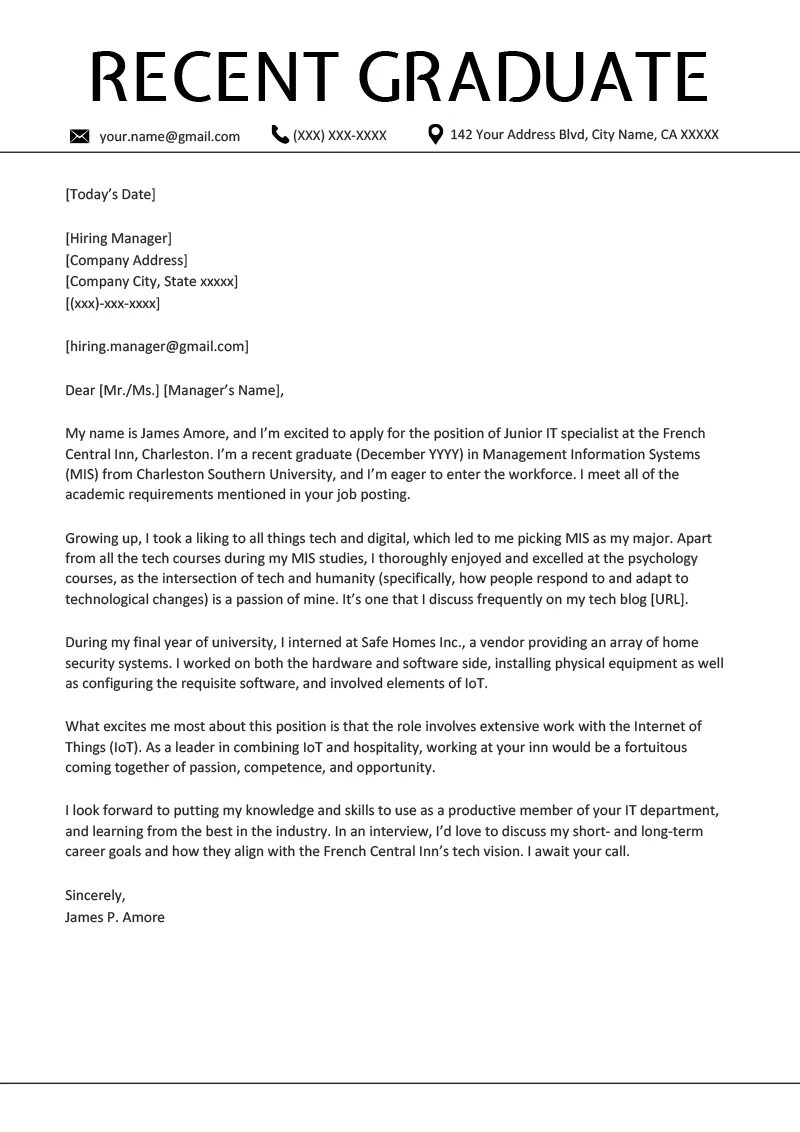
Address your cover letter to the hiring manager or the specific person mentioned in the job posting. Researching the company to find the hiring manager’s name demonstrates your attention to detail and genuine interest in the role. If you are unable to find a specific name, use a professional salutation such as “Dear Hiring Manager.” Avoid generic greetings like “To Whom It May Concern.” This personal touch shows that you have taken the time to research the company and the position, which can make a good impression.
Opening Paragraph
Start with a strong opening that grabs the reader’s attention. State the position you are applying for and where you found the job posting. Briefly mention why you are interested in the role and the company. This paragraph should set the tone for the rest of your letter and immediately convey your enthusiasm for the opportunity. A compelling opening creates a positive first impression and encourages the reader to continue reading your letter. Clearly state the role you are applying for in the opening paragraph.
Highlighting Your Qualifications
In the body of your letter, highlight your qualifications and skills that align with the job description. Provide specific examples from your academic projects, research experience, or previous work experience. Use keywords from the job posting to demonstrate that you meet the employer’s requirements. This section is where you showcase your abilities and how they align with the needs of the company. Remember to quantify your accomplishments whenever possible to demonstrate the impact of your work and show the value you can bring to the role.
Showcasing Relevant Experience
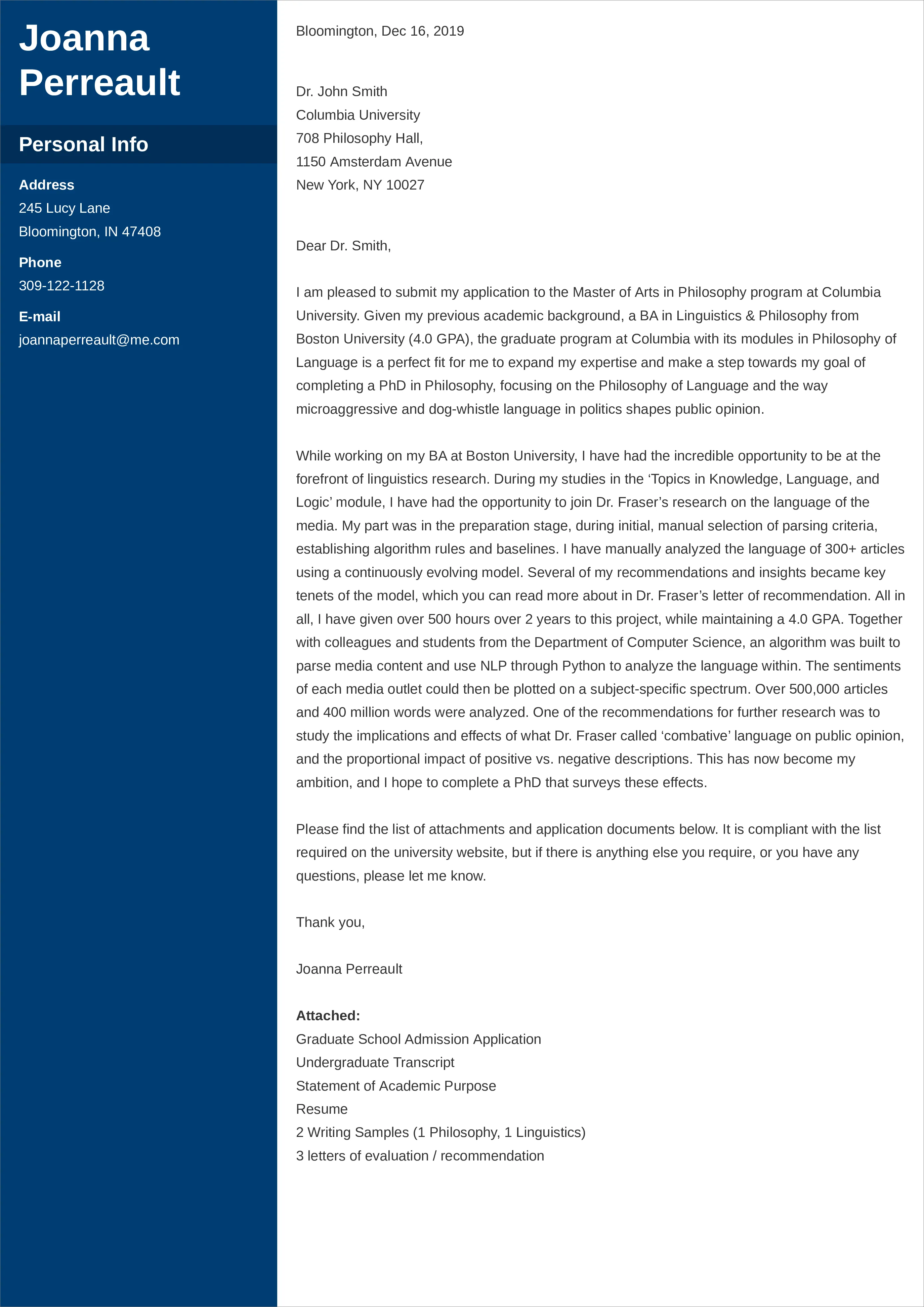
Detail your relevant experiences, such as internships, research projects, or part-time jobs. Provide context, explaining your role, responsibilities, and the skills you utilized. Focus on experiences that are most pertinent to the job you are applying for. This helps the hiring manager understand the practical application of your skills and how you have used them in real-world scenarios. Use action verbs to describe your tasks and accomplishments.
Quantifying Achievements
Whenever possible, quantify your achievements. Use numbers, percentages, and metrics to demonstrate the impact of your work. For example, if you improved efficiency, state the percentage increase. If you managed a budget, specify the amount. This provides concrete evidence of your skills and accomplishments. This approach makes your claims more credible and helps the hiring manager easily assess your value.
Demonstrating Research Skills
If the job requires research skills, showcase your ability to conduct research, analyze data, and draw conclusions. Describe any research projects you have been involved in and the methodologies you employed. Highlight any publications, presentations, or awards you have received. This demonstrates your analytical abilities and your ability to contribute to a research-oriented environment. It is important to provide details of your research experience. Include the techniques you used, the outcomes, and any publications.
Expressing Your Interest and Fit
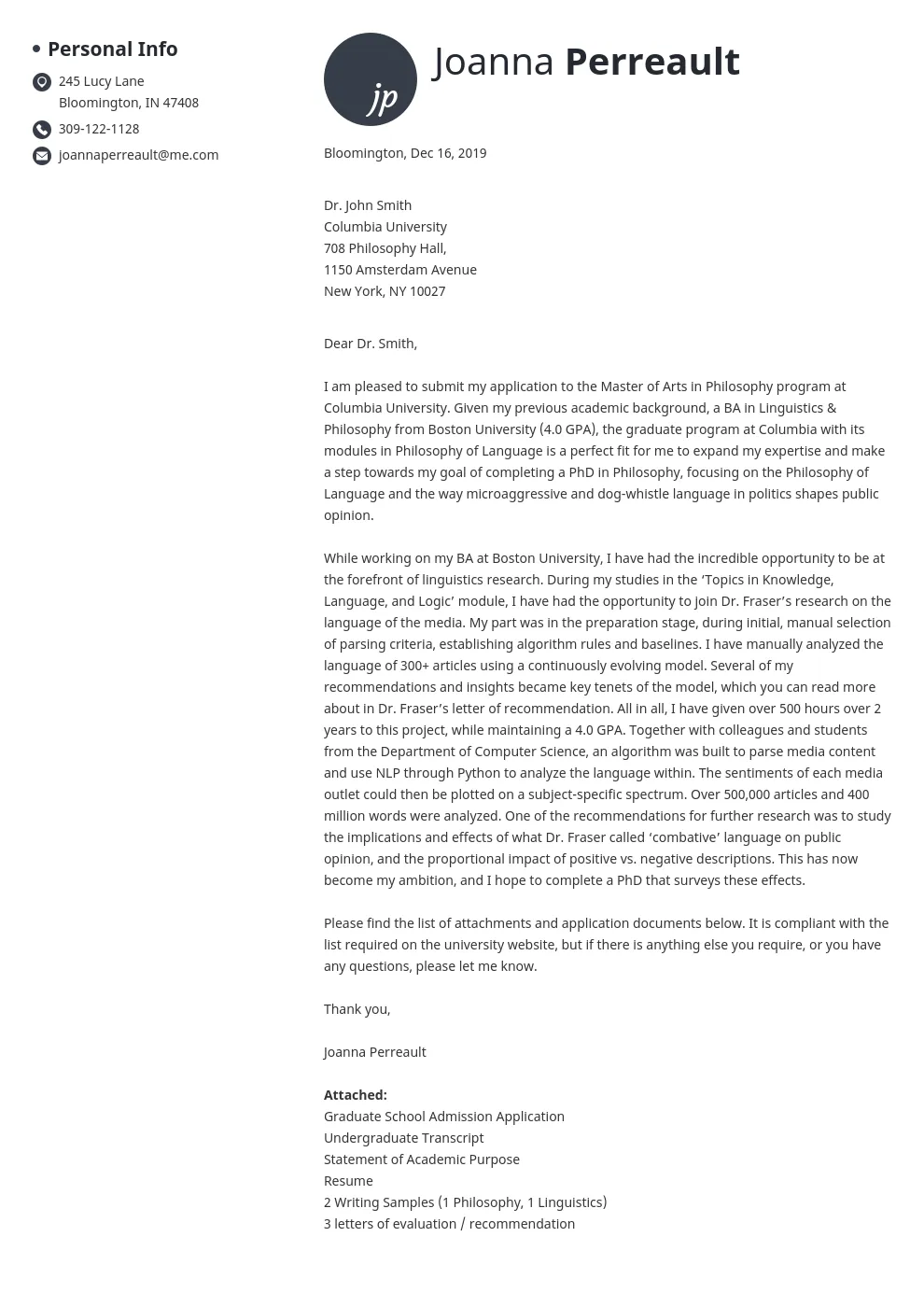
Clearly express your interest in the specific role and the company. Explain why you are a good fit for the position and the company’s culture. Research the company’s mission, values, and recent projects to demonstrate your genuine interest. Connect your career goals with the opportunities offered by the position. Show the hiring manager that you have a clear understanding of the role, the company, and what you hope to achieve.
Closing Paragraph
In your closing paragraph, reiterate your interest in the position and thank the hiring manager for their time and consideration. Include a call to action, such as stating that you are available for an interview and look forward to hearing from them. End with a professional closing, such as “Sincerely” or “Best regards,” followed by your full name. Express your appreciation for their time. Indicate your availability for an interview and state how you can be contacted. Proofread carefully to ensure that your closing is professional and error-free.
Formatting and Presentation Tips
Font and Font Size
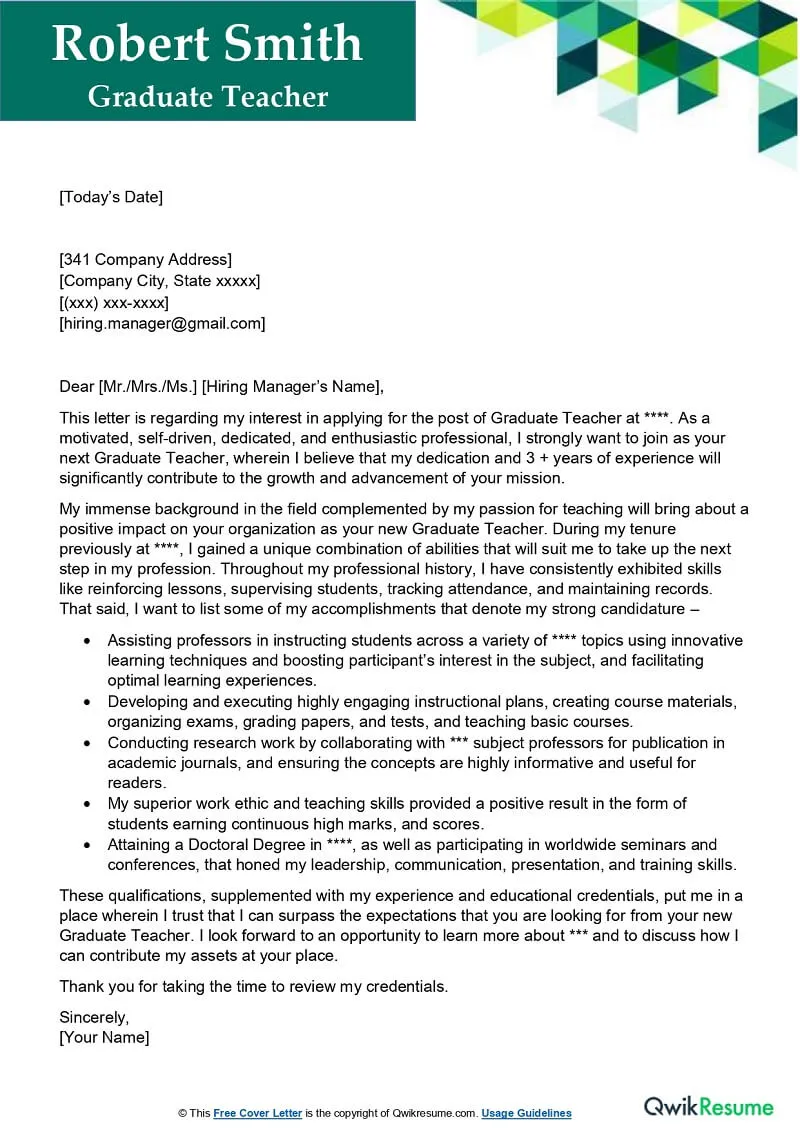
Choose a professional and easy-to-read font, such as Arial, Calibri, or Times New Roman. Use a font size between 10 and 12 points. Maintain consistency in your font and font size throughout the document. These font choices and sizes are industry standards and make your cover letter easily readable. Avoid using overly fancy fonts, as they can distract from the content and make your letter appear less professional.
Margins and Spacing
Set your margins to 1 inch on all sides. Use single or 1.15 line spacing for the body of your letter. Double-space between paragraphs. Proper spacing and margins make your cover letter visually appealing and easier to read. This formatting helps the hiring manager navigate your content and find the key points. The consistent formatting presents your work in a neat and organized manner, which leaves a good impression on the hiring manager.
Proofreading and Editing
Proofread your cover letter carefully for any typos, grammatical errors, or inconsistencies. Use spell-check and grammar-check tools, but also read your letter aloud to catch any errors that these tools might miss. Have a friend or career advisor review your letter for feedback. Errors can create a negative impression and diminish your chances of getting the job. Proofreading is essential for creating a positive first impression and showing your attention to detail and professionalism.
Graduate Cover Letter Examples
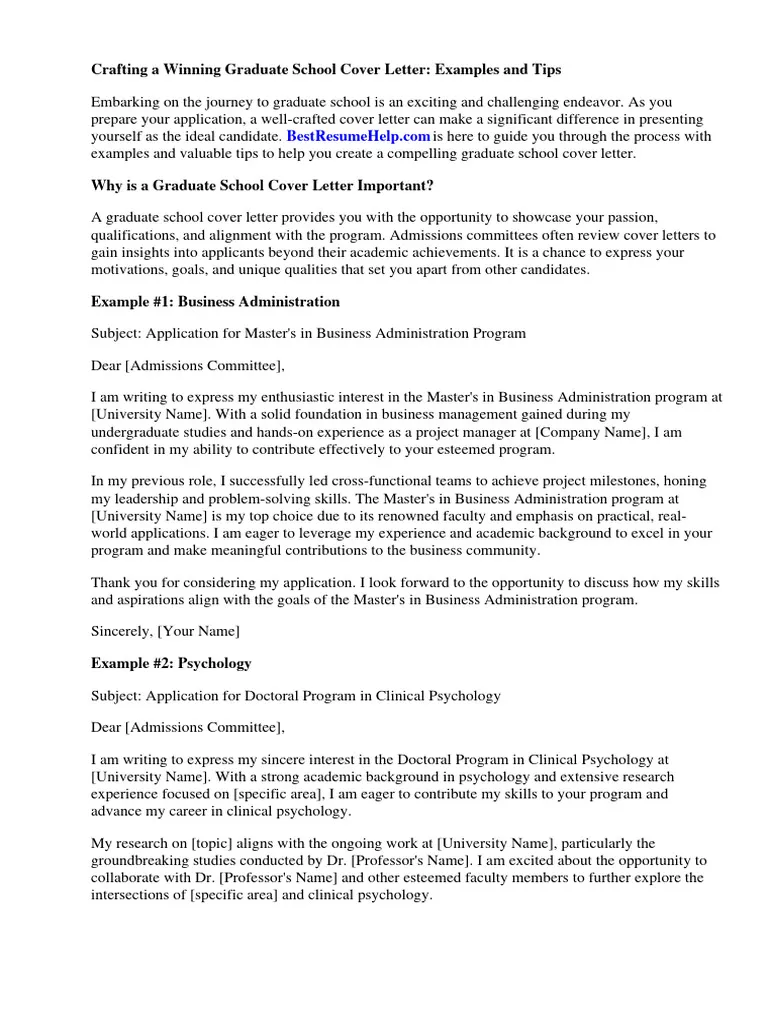
Example Cover Letter 1
Here is an example of a graduate cover letter. This sample letter focuses on a recent graduate applying for a research assistant position. The candidate’s writing style emphasizes their research background and academic achievements. The example also includes a tailored summary of relevant experience and skills for the role. The example is designed to be a template, and the applicant can fill in their information.
Example Cover Letter 2
Here is another cover letter example. This is a graduate cover letter example tailored for a software engineering position. This example highlights the applicant’s technical skills and the projects they have worked on. Also included are examples of how the skills match the requirements of the job description, and what the applicant hopes to achieve in the role.
Common Mistakes to Avoid
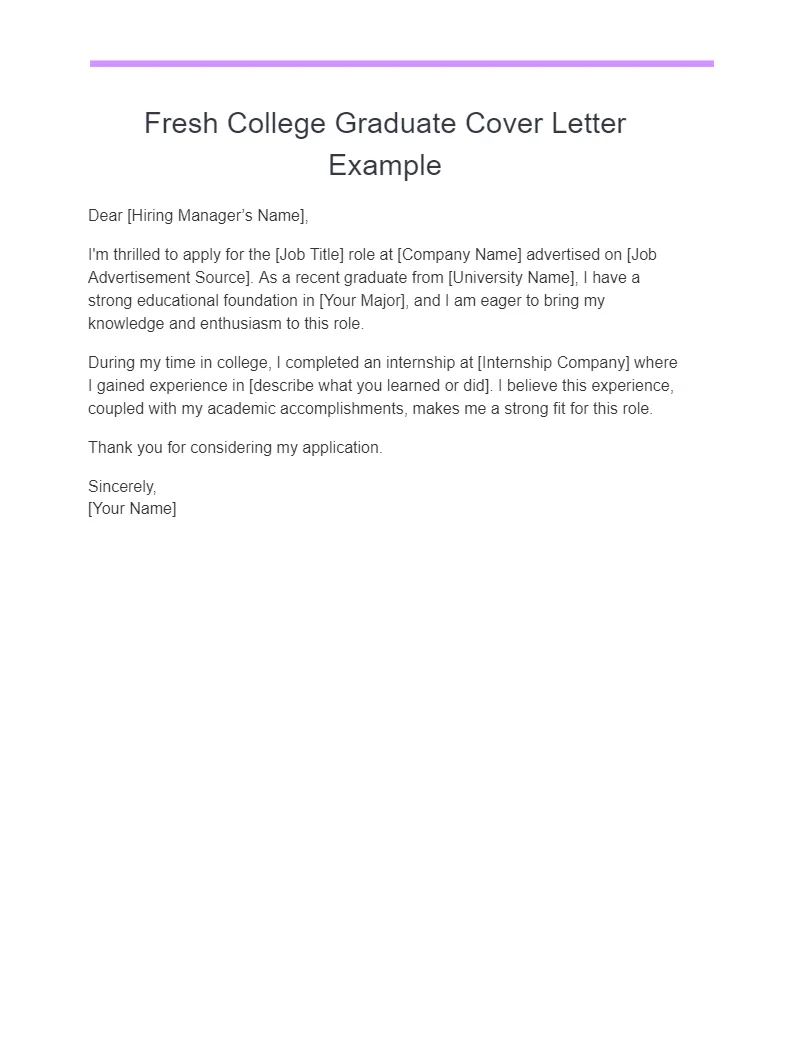
Generic Language
Avoid using generic or vague language that could apply to any job. Tailor your cover letter to the specific position and company. Use specific examples and details to showcase your qualifications and accomplishments. Generic language makes it seem like you haven’t put much thought into the application, which is not a good impression to leave with the hiring manager. Show enthusiasm for the role, and explain why the position is a perfect fit for you.
Typos and Grammatical Errors
Typos and grammatical errors can damage your credibility and make you appear unprofessional. Always proofread your letter carefully and use spell-check and grammar-check tools. Ask someone else to review your letter before submitting it. Even a single error can create a negative impression, and can make a potential employer question your attention to detail. Take your time to ensure your letter is polished and error-free.
Ignoring the Job Description
Failing to address the specific requirements outlined in the job description is a major mistake. Tailor your cover letter to highlight how your skills and experiences align with the employer’s needs. Use keywords from the job description and provide examples of how you have demonstrated those skills in the past. Ensure you explain why you are a strong candidate. Demonstrate that you have taken the time to read the job posting and understand what the employer is looking for in a candidate.
Tailoring Your Cover Letter
Researching the Employer
Before writing your cover letter, research the employer and the specific role. Visit the company’s website, read about their mission, values, and recent projects. Understand the company’s culture and the industry trends. This research will help you tailor your cover letter to demonstrate your genuine interest and how you can contribute to the organization. Make sure to include specific details from your research and demonstrate a clear understanding of the company.
Customizing for the Specific Role
Customize your cover letter for each job you apply for. Avoid sending a generic cover letter to multiple employers. Tailor your letter to the specific requirements and expectations of the role. Highlight the skills and experiences that are most relevant to the job. Address the needs of the employer and demonstrate how you can meet those needs. This tailored approach shows that you are serious about the opportunity and have a clear understanding of the role.
Seeking Feedback
Ask a career advisor, professor, or mentor to review your cover letter and provide feedback. They can offer valuable insights and suggestions for improvement. A fresh perspective can help you identify any weaknesses or areas for improvement that you might have missed. Proofreading by a second set of eyes can help catch any errors. Incorporate feedback to create a more polished and effective cover letter. Constructive criticism will help you create a better letter, and will improve your odds of landing an interview.
In conclusion, a well-crafted graduate cover letter is an essential tool for graduate students seeking employment. By understanding its purpose, components, and best practices, you can create a compelling cover letter that highlights your qualifications and increases your chances of success. Remember to tailor your letter to each specific job, proofread carefully, and seek feedback to ensure it makes a positive impact. Taking these steps will significantly improve your prospects in the competitive job market.
